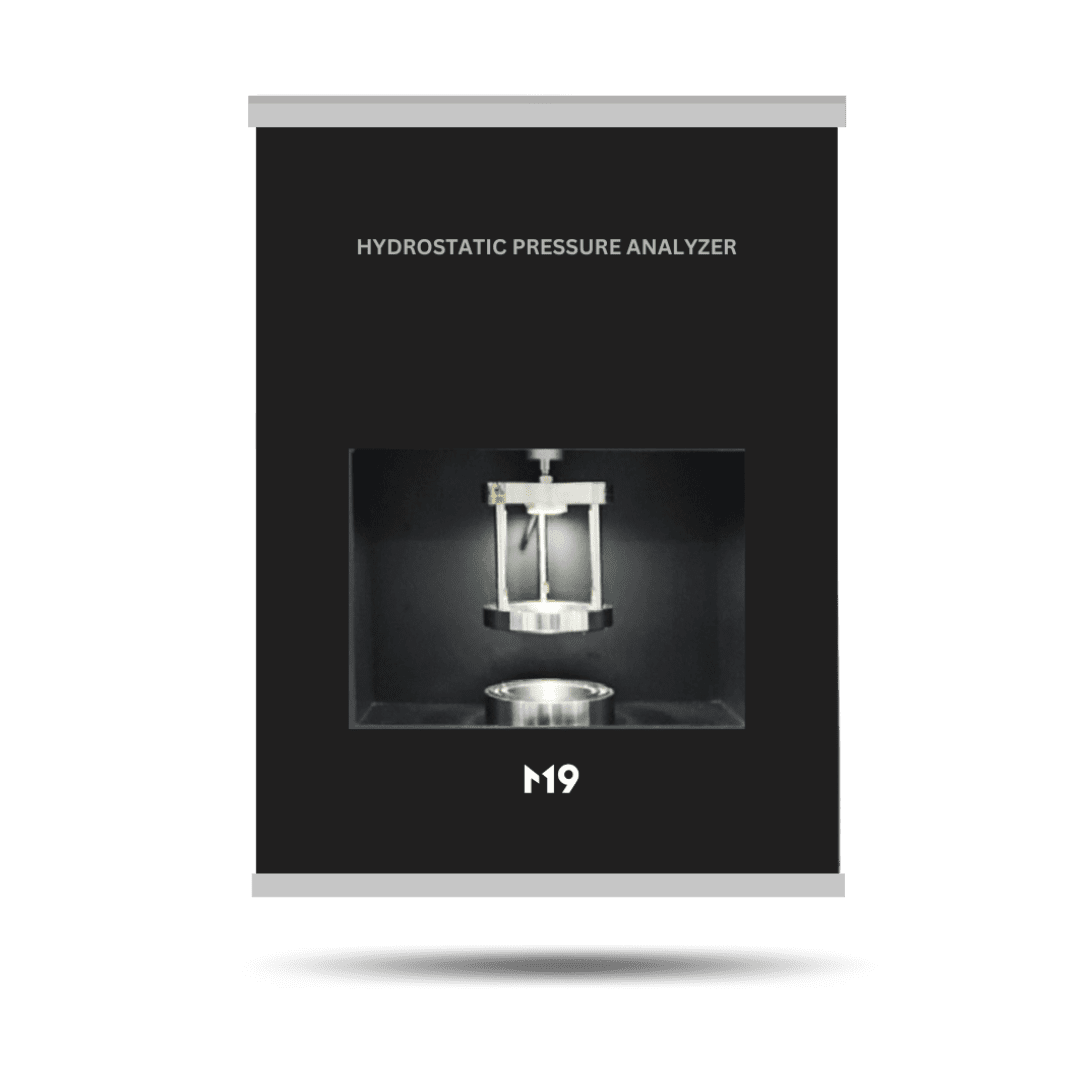HYDROSTATIC PRESSURE ANALYZER

CUSTOM MADE FOR TECHNICAL TEXTILE INDUSTRY
Standard: AATCC 127, ISO 811, ASTM D751,
EN 20811, GB/T 4744
EN 20811, GB/T 4744
Test Range: 0-3000 mbar
Test Duration: 1 minute
Precision: ±0.5% of Display Value


TECHNOLOGY

In the Hydrostatic Pressure Analysis method for technical textiles, also known as the Hydrostatic Head Test, a fabric sample is mounted onto a testing apparatus and subjected to increasing levels of water pressure. This is achieved through an automated control system that applies dynamic force, incrementally increasing until at least three points of leakage are detected. Determining the Hydrostatic Head, which is the height of the water column at which penetration occurs, provides valuable data on a fabric's water resistance, aiding manufacturers in ensuring product quality and performance.
APPLICATIONS

- Coated/Laminated Fabrics
- Sports Textiles
- Rainwears
- Medical Textiles
- Automotive Textiles
- Marine Textiles
- Geotextiles
CUTTING EDGE DESIGN

SIMPLE | INTELLIGENT | MORE INTEGRATED
The hardware system has evolved into a highly sophisticated instrument with increased ease-of-operation, data accuracy, reliability, and end-to-end automated operation.
ADVANCED SOFTWARE

AI BASED | DYNAMIC REPORTS | EASY TO USED
Unprecedented visualization and collaboration using new M19 software control program and test report program. Experience the power of A.I based cognitive software control program that virtually eliminated user bias throughout the data acquisition process and data interpretation, redefining the way data is generated and consumed by your team.
HIGH PERFORMANCE COMPUTING

INCREASED PRECISION | ACCURACY | REPRODUCIBILITY
M19 instruments deploy cutting-edge ARM7 group of 32-bit RISC ARM processor cores licensed by ARM Holdings for microcontroller use, which not only enhances the precision of our analyzers but also ensures consistent, reliable results across all testing platforms. With our technology-centric approach, we strive to set a new standard for material characterization, promoting credibility and trust in every test conducted.
FAQ's
1 - WHAT IS HYDROSTATIC PRESSURE ANALYZER (HPA)?−
- Hydrostatic Pressure Analyzer is used to evaluate a fabric material's resistance to water penetration. It is commonly required for textile products such as gowns, drapes, and barrier fabrics, and is performed in conformance with various industry criteria and standards.
2 - HOW DOES HPA WORK?+
3 - WHO USES HPA INSTRUMENTS?+
4 - WHAT ARE THE BASIC REQUIREMENTS FOR HPA USAGE?+
5 - HOW WILL HPA BENEFIT MY COMPANY?+


